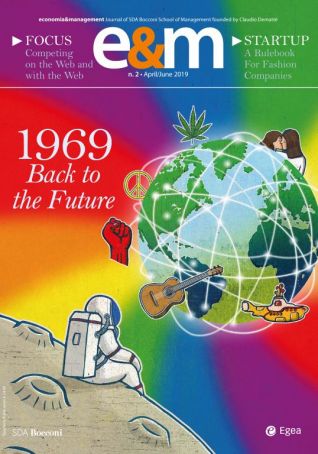E&M
2019/2
A Synergy of Public and Private in Space Exploration
The first phase in the history of human exploration of space, in the 1950s and ’60s, saw a pre-eminent role of government: public investment in the military field and the missions to the moon set off processes of technological innovation with very positive spinoffs for the economies as a whole, as in the case of the development of satellite technologies,#Since the 1970s, more and more private corporations have entered the space economy. Today the satellite economy amounts globally to 270 billion dollars, while the non-satellite part of the space economy, including robot exploration of the solar system and space science, is worth about 79 billion dollars. This is therefore a minimal fraction of the global economy, but in reality the contributions that could arise from it could be decisive in increasing the efficiency of a wide variety of sectors, from agriculture to healthcare and smart cities. To enable a further development of the space economy, it therefore becomes necessary to set up innovative business models, for example by establishing innovative forms of cooperation between the public and private sectors.



